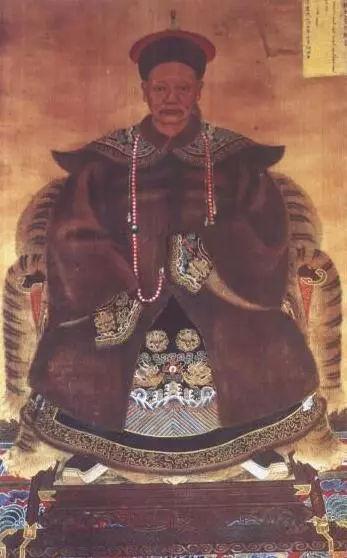
Hooge
| Name | Hooge |
| Title | Chinese prince |
| Gender | Male |
| Birthday | 1609-04-16 |
| nationality | China |
| Source | https://www.wikidata.org/wiki/Q1039354 |
| pptrace | View Family Tree |
| LastUpdate | 2025-10-27T03:41:14.628Z |
Introduction
Hooge (Manchu: ; 16 April 1609 – 4 May 1648), known formally as Prince Su, was a Manchu prince during the Qing dynasty. He was a member of the Aisin Gioro clan, the imperial family of the Qing dynasty, and the eldest son of Hong Taiji, who was the second ruler of the Later Jin Dynasty and the founder of the Qing Dynasty.
Born in 1609, Hooge's mother was Lady Ula Nara, one of Hong Taiji's consorts. She was related to Lady Abahai as her aunt. Hooge participated in military campaigns against various enemies, including the Mongols, Koreans, and the Ming dynasty, reflecting active involvement in the military affairs of the early Qing state.
Following the death of Hong Taiji in 1643, a succession dispute arose among his successors. Hooge and his uncle Dorgon vied for control of the throne. The initial advantage lay with Hooge because the Upper Three Banners—Bordered Yellow, Plain Yellow, and Plain Blue—had been under Hong Taiji's control and were passed on to him. Hooge managed the Plain Blue Banner and received support from the Plain Yellow Banner commander Sonin and the Bordered Yellow Banner commander Oboi. Dorgon, on the other hand, had support from his brothers Ajige and Dodo and commanded the White Banners. The control of the remaining Banners—Red Banners under Daišan and his son and the Bordered Blue Banner under Jirgalang—was crucial to the succession outcome.
Daišan showed a preference for Hooge, who intentionally avoided taking the throne immediately, awaiting external promptings to avoid giving an impression of ambition. Despite this, the rivalry persisted without resolution until a compromise was reached. Dorgon nominated Fulin, the ninth son of Hong Taiji born to Consort Zhuang, to succeed as the Shunzhi Emperor, thus establishing a new emperor in 1644. This decision was influenced by the support of the Mongol Borjigit clan, which was associated with Consort Zhuang, and considerations of lineage and political alliances. Dorgon's selection was also related to the belief that Fulin's legitimacy as a son of Hong Taiji would strengthen his claim, and support from Hooge and the Three Upper Banners reinforced this choice.
Despite the coronation of the Shunzhi Emperor, conflicts persisted. Hooge was suspected of plotting to seize the throne, and he reportedly confided his plans to Dorgon's brother Dodo, who informed Dorgon. As a result, Hooge was arrested and imprisoned. During his incarceration, the Qing government was engaged in military campaigns against remaining rebellion forces in western China. Hooge died in prison in 1648. In 1650, two years after his death, he was posthumously rehabilitated.
His familial relationships included multiple consorts and children. His primary consorts were from the Hada Nara clan and the Khorchin Borjigit clan; he also had secondary consorts from the Nara and Shuolongwu clans. Hooge fathered several children, including his fourth son Fushou, who was granted the title Prince Xianque of the First Rank. Other children included a daughter born in 1638, a son named Qizheng'e, and a son named Xingbao, among others. Hooge's descendants held various noble titles, and his lineage was integrated into the nobility of the Qing dynasty.
Hooge's life was characterized by involvement in military and political affairs during a critical period in Qing history, marked by succession disputes and consolidation of power by subsequent rulers.
**References**
- Zhao, Erxun (1928). *Draft History of Qing (Qing Shi Gao)*.
- Hummel, Arthur W. Sr., ed. (1943). "Haoge." *Eminent Chinese of the Ch'ing Period*. United States Government Printing Office.
Family Tree
Tap to expand more relatives